2020 Central Valley Grape Harvest Update {7/10/20}
We spoke with Joe from Cry Baby Vineyards this week and he said, “the 2020 harvest is off to a great start. We had good growing conditions throughout the year and veraison is happening in the Black Muscat and Teroldego vineyards. The crop is looking to be of normal to light size. This means well balanced berries for great winemaking results. We are projected to have some higher degree days in the coming weeks. Due to this, we are thinking harvest might be 1-2 weeks earlier than last year. The earliest ripening fruit should start coming off the vine around August 20th if the weather stays on this track.”
We at Musto Wine Grape will keep you updated as the California harvest develops!
Frank Musto’s Black Muscat Vineyard
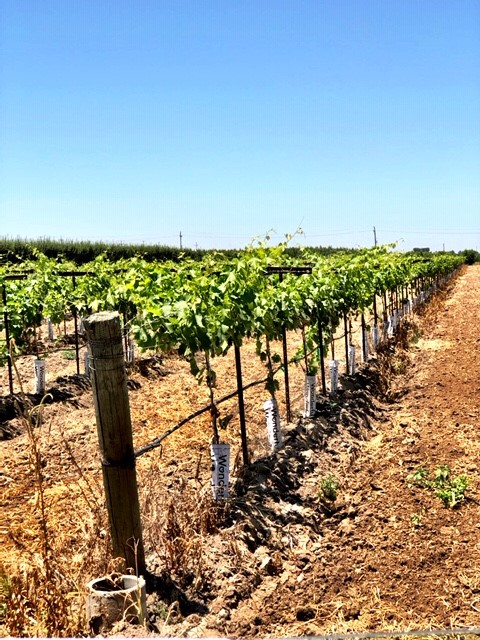
Black Muscat Grapes going through Veraison
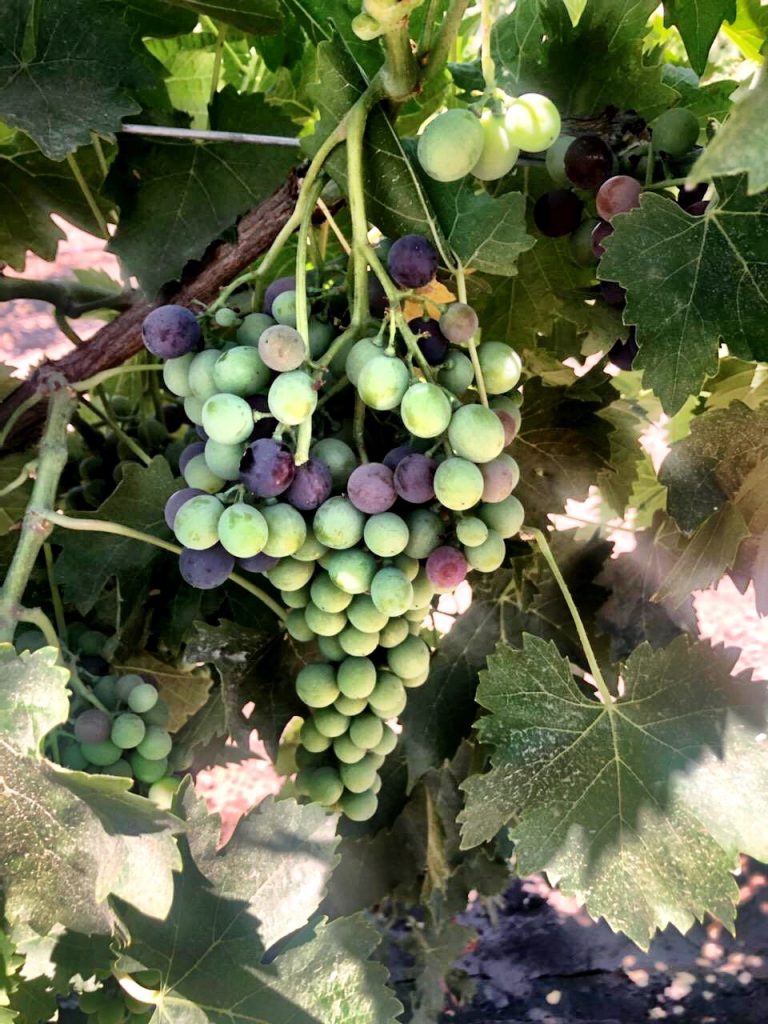
What is Veraison?
Veraison occurs when the berry transitions into the ripening stage. From now forward the berry will increase in sugar concentration until it is harvested at the desired brix level. Grapes for sparkling wine or champagne are harvested around 17 brix and grapes for still wine are harvested around 25 brix. The brix level will determine the alcohol level in the wine. For example, a grape picked around 25 brix should create a 12.5% alch by volume wine.
Teroldego going through Veraison
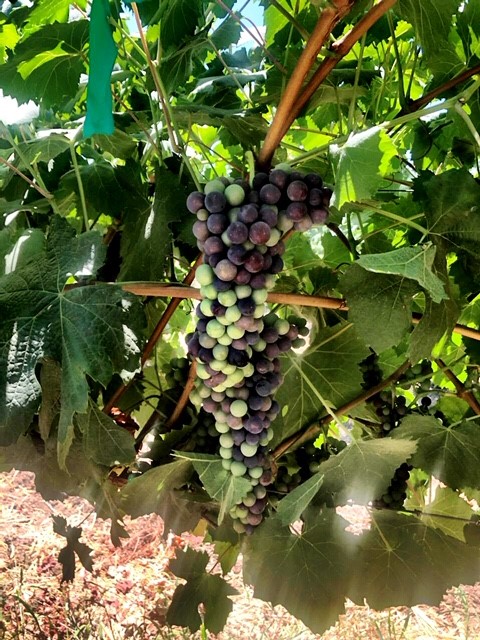
Interested in making Black Muscat or Teroldego?
Check out these blog posts below for more details!
Teroldego
Black Muscat
If you are interested in purchasing wine grapes or winemaking juices this fall please email sales@juicegrape.com or call 877-812-1137 for pricing and information. We are looking forward to speaking with you about your 2020 vintage!
2020 Lodi Wine Grape Harvest Update {7/9/20}
The 2020 Lodi Wine Grape harvest is starting to take shape. Crop timing is about 5 to 7 days ahead of last year, making it more of a “normal” crop year. The fruit set is looking average to light, but mostly average in size. This should produce good, well balanced berries for winemaking. Lodi has had ideal wine growing weather and is expected to have a great harvest this year.
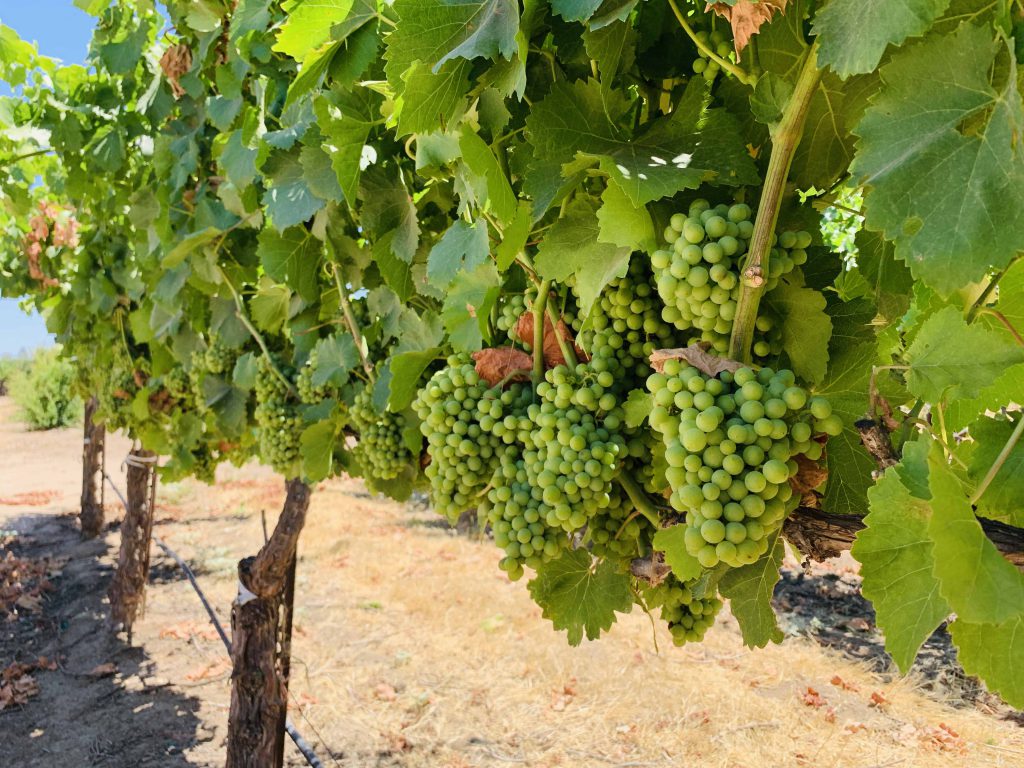
Here’s a quick look at some of Lodi’s more popular varieties and when they might start to harvest:
Chardonnay
- Crop: Average
- Harvest Start Date: 8/25/20
Pinot Grigio
- Crop: Average
- Harvest Start Date: 8/21/20
Pinot Noir
- Crop: Average
- Harvest Start Date: 8/28/20
Cabernet Sauvignon
- Crop: Average
- Harvest Start Date: 9/5/20
Sauvignon Blanc
- Crop: Average
- Harvest Start Date: 8/26/20
Merlot
- Crop: Average
- Harvest Start Date: 9/4/20
Zinfandel
- Crop: Average
- Harvest Start Date: 9/4/20
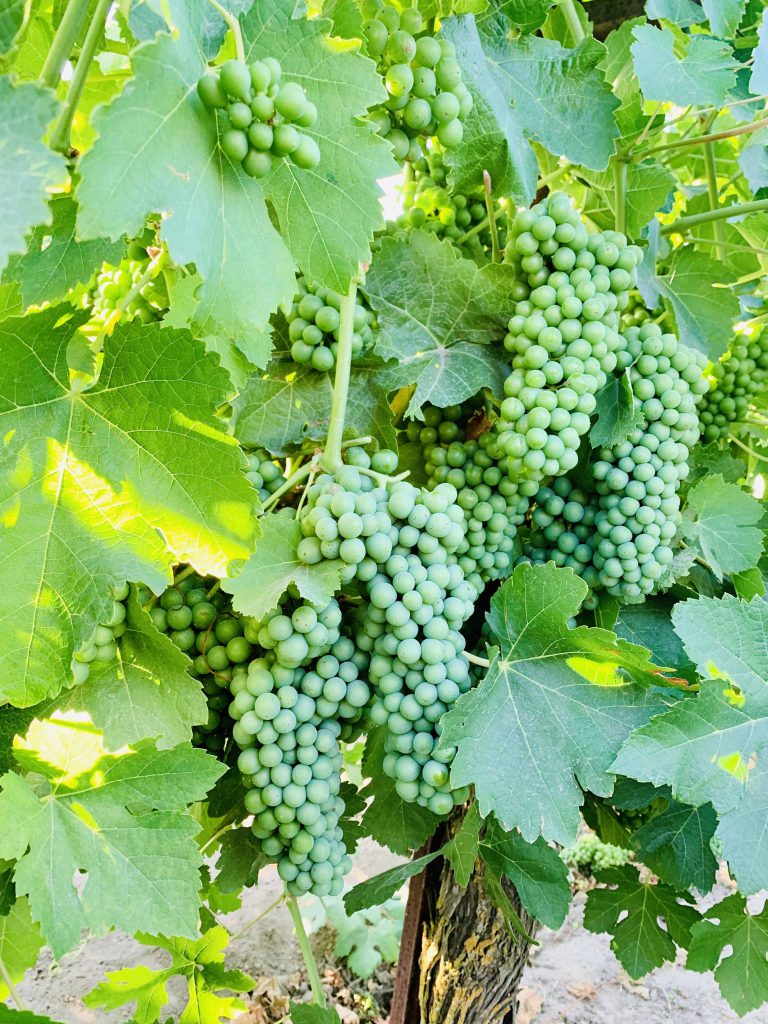
If you are interested in purchasing wine grapes or winemaking juices this fall please email sales@juicegrape.com or call 877-812-1137 for pricing and information. We are looking forward to speaking with you about your 2020 vintage!
A note about Covid-19 precautions: Delta packing continues to be extra vigilant when it comes to the safety of their employees and customer to ensure that the grapes are harvested and shipped safely this year. In the vineyards and main facility, temperature checks are taken daily for everyone, hand washing and sanitation stations are in every work area, and social distancing is required.
Apple Pie Bites Recipe + Wine Pairing
Apple Pie Bites Recipe + Wine Pairing
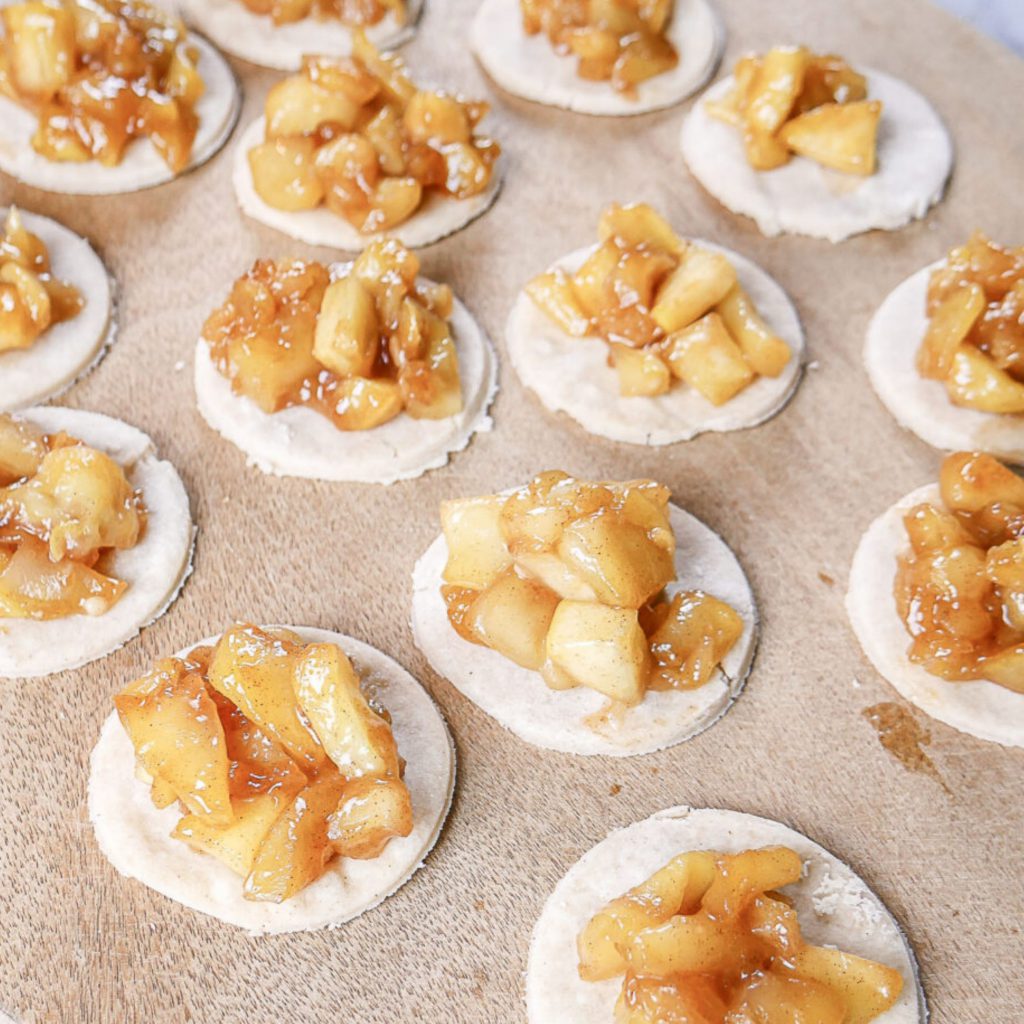
If you’ve been in the mood for a crispy, flaky treat you’re in luck – we’ve taken this delicious pie and turned it into your new favorite bite sized treat! There are a few different ways to approach this and it may depend on your level of expertise. I personally suck at making pie crust so I take the easy way out by buying the premade refrigerated ones. If making your own crust is your own personal super power, I say go for it! It’s just a battle I can’t win. The filling is easy for even the earliest of beginners, but you can also buy premade fillings to save time – I just love using fresh apples! If you’re in Connecticut, Lost Acres Orchard in North Granby, Scott’s Orchards in Glastonbury, Lyman Orchards in Middlefield and Rose Orchards in Branford are a few favorites to get the freshest apples!
Let’s get started with what you’ll need:
You’ll need about 2-2 & ½ cups of sliced or diced apples (about 1 pound or 3 medium apples)
1 tablespoon lemon juice
1 ½ cups of water
¾ cups granulated sugar
8 teaspoons of cornstarch
1 teaspoon cinnamon
¼ teaspoon salt
¼ teaspoon nutmeg
You have the freedom to adjust each ingredient as everyone’s preferences are different, that’s what fun about making things from scratch – you have total control over what you’re making and the taste you’ll yield!
What you need to do:
Preheat your oven to 425 degrees
Unroll the pie crust, and using a 3-4 inch cookie cutter cut 6-8 circles of crust. Roll out scraps of dough and cut and additional circles you can.
Place your apples in a large bowl and toss with lemon juice.
Place water, sugar, cornstarch, cinnamon, salt and nutmeg in a medium sauce pan. Stir to combine then bring to a boil over medium heat stirring often. Once the mix comes to a boil, let it boil for 2 minutes. Let cool and allow the mixture to thicken.
Once cooled, place your apple filling in each circle. This can be a spoonful if you diced your apples or about 1-2 slices.
Fold the crust in half and pinch around the edges to close.
Sprinkle with cinnamon and sugar and bake for 20 minutes or until golden brown and flaky.
Once cooled, melt butter and whisk with powdered sugar, vanilla and half a tablespoon milk to make a loose drizzle to add on top.
But before you enjoy – grab a bottle of Chenin Blanc! The wine’s bubbling crispness and high acidity helps offset the pie’s rich and buttery crust. Now you’re ready to kick back and enjoy your well earned treat!
Want to make your own Chenin Blanc? Musto Wine Grape Company is New England’s largest supplier for winemaking products and services. From home winemakers to wineries, we’ve got you covered! Give us a call at 877 – 812 – 1137 to speak with someone to get you started.
A White Wine Drinker’s First Shot at Tasting Red Wines
A White Wine Drinker’s First Shot at Tasting Red Wines
Christina has given me a few bottles of wine to stretch my tasting abilities and educate my nose and taste buds. Here’s how it went! My go-to’s have always been a sweet white or rosé, I haven’t really ventured out with reds mostly because the first red I had was gross and I figured all red wines were like that. I was definitely wrong! Note, I am a beginner at tasting red wines so these are very amateur notes.
The first wine Christina gave me to try was a 2018 Sonoma Cabernet Sauvignon.
Ashley: I smell cherry the most, with kind of a plumy smell, and maybe prune; but cherry was the first thing I smelled.
Christina: Great! Next time think about what kind of cherry – Black cherry? Red cherry? Ripe cherry?
Ashley: It has a nice deep purple toned color to it and has no floaters.
Christina: Good, the browner the tinge of the wine the older the wine is.
Ashley: There’s no carbonation or fizz – I’m used to the wines I drink having bubbles or a little fizz to them.
Christina: Good! Fizz really only happens if the wine wasn’t taken care of or if it is a sparkling wine.
Ashley: It makes my mouth pucker at first but doesn’t leave my tongue dry for long, it goes away quickly.
Christina: If you salivate that means the wine is high in acid, if it dries out your mouth that means tannins are present. Sometimes people use the word “pucker” referring to both. Next time try to think about what is causing that feeling? Is it the salivation in your mouth like if you just tasted a bitter lemon, or is it the drying out of your mouth/chalky feeling in your mouth?
Ashley: Alcohol is pretty high!
Christina: Glad you picked up on this! Most Cabernets from Sonoma and Napa California are higher in alcohol.
Ashley: Kind of tastes like a Cigar.
Christina: That usually has to do with barrel aging or growing region; you find this characteristic a lot in red wines from Chile and Argentina. If you find it in a CA wine it’s usually due to barrel aging in a heavy toasted barrel.
Ashley: I pick up black pepper but it’s not strong.
Christina: I’m glad you thought about the type of pepper. That’s great. Try to be as specific as you can be.
Ashley: It’s easy to swallow but gives a hot feeling in my chest, kind of like if you drank something hot with cinnamon.
Christina: That is an indicator of high alcohol. Good job picking up on that!
Ashley: Kind of a charred taste, like eating the black burnt part of a marshmallow or pizza crust.
Christina: This has to do with the aging process of this wine. It sounds to me like it was a little “tight” and could have been laid down for a few more years so the balance of fruit and earth could shine through. Great specific description of what you tasted.
Ashley: It’s not something I would drink on a regular but it wasn’t terrible.
Christina: Great, you are figuring out what you like. Think about what type of food you would have this with and if it would change your perception of the wine.
Next was a 2015 Cabernet Sauvignon 169.
Ashley: This one gave a rush of burning through my nose upon first sip and swallo2. It reminds me of the sensation you get when you burp through your nose
Christina: This means it’s got a decent amount of alcohol in it.
Ashley: I definitely taste black pepper with this one; it’s very smooth, smoky and earthy. Kind of when you eat a vegetable right out of the garden without washing it and it has like dirt on it haha!
Christina: Haha those are good descriptors!
Ashley: It doesn’t seem to be too high in tannins, after a few sips my tongue started to dry out, but right off the bat I didn’t feel much dryness.
Christina: This means the tannins were balanced, soft, and supple. That’s a good thing for red wines.
Ashley: I also got black cherry and plum in this one, though it is dry it kind of gave me the impression that it was going to be slightly sweet, because it smells like it but it definitely was not sweet.
Christina: This happens a lot with dry red wines; you get sweet notes on the nose but not on the palate. Good job picking up on the fruit aromas!
Ashley: Overall this is the first red wine I didn’t hate and would actually drink again! I definitely see myself enjoying it with a steak for dinner.
Christina: Wow that’s great!
The last wine I tried was a 2018 Chilean Malbec.
Ashley: Very earthy, I got that same dirt taste from the cab but it’s way more prominent with this one.
Christina: Good descriptors!
Ashley: It’s also very dry, significantly drier and higher in tannins than the cab 169. It dried my tongue out on the first sip and kind of made my throat feel dry too.
Christina: Perfect! Now you know the difference between medium/balanced tannins and high tannin wines.
Ashley: I do pick up on a black pepper, and get some licorice, some bitter blackberry as well. But the dirt taste is what my mouth captures first and sticks throughout the whole experience.
Christina: Okay good observations and descriptors!
Ashley: I wasn’t a fan of this one because the dirt taste was all I could focus on.
Christina: Good! You know now that you don’t like high tannin earthy wines.
Reflection
The Cab 169 from Suisun Valley, CA definitely left an impression on me and I am going to explore with other wines from the similar region and see what else I can take a liking to! Overall this was a fun experience and I look forward to experimenting and broadening my wine horizons. A big thanks to Christina for being an awesome teacher, it’s looking like I’ll be a pro at tasting and winemaking in no time!
If you are interested in wine tasting and help with developing your palate, do not hesitate to reach out to us at Sales@JuiceGrape.com, or by calling us at 877-812-1137. At Musto Wine Grape we are always searching for ways connect with you and help you along in your winemaking and wine loving journey. We offer a wide variety of products, services and classes to help you create a wine you love and assist you in being able to experience the way wine was created to be experienced!
For updates on harvests, educational tutorials and more, follow us on Instagram and Facebook.
National Donut Day Donut & Wine Pairings
Happy National Donut Day! What better way to celebrate than pairing those tasty round treats with some wines that allow you to unlock a whole new world of flavors?! Let’s get to it.
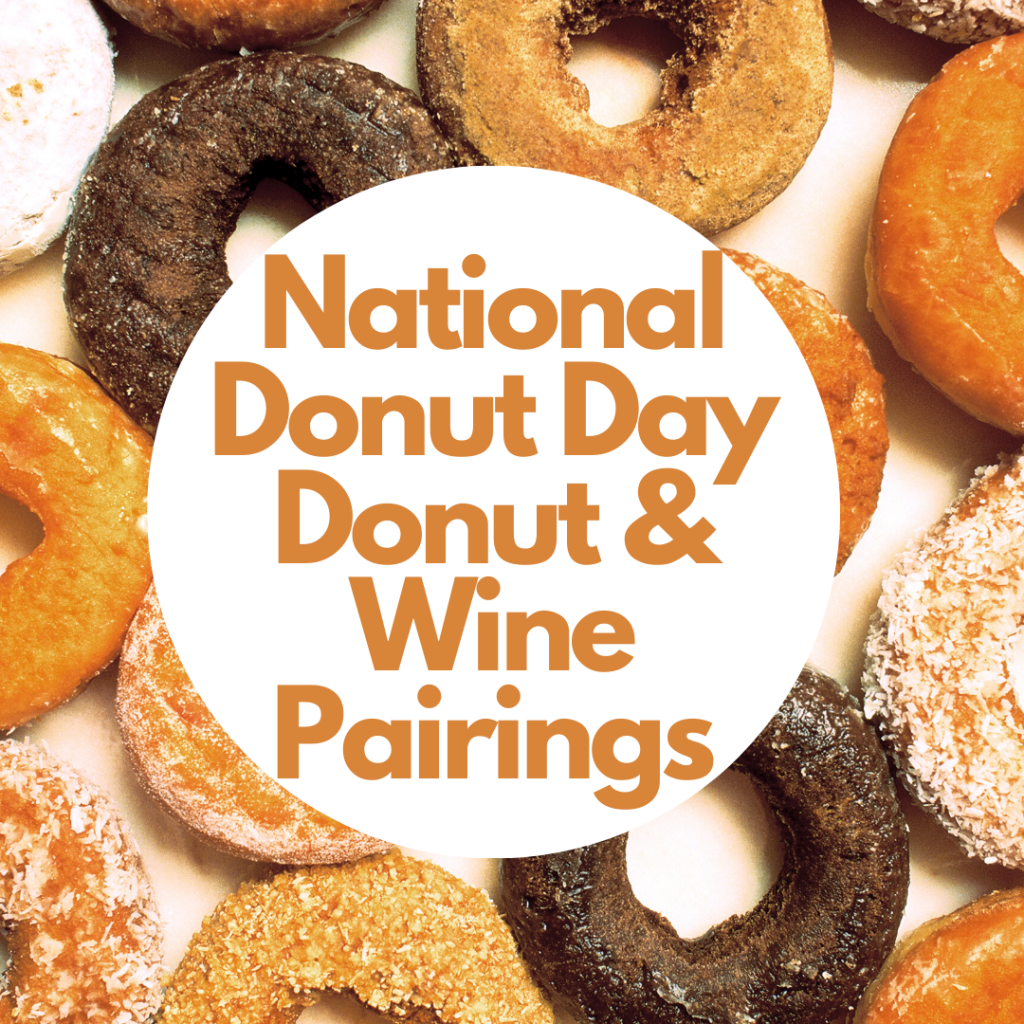
First we’ll start with a classic, the chocolate frosted donut with sprinkles!
Prosseco is the perfect pairing for this donut. The airiness of the donut lounging underneath the decadent frosting is a match made in heaven with this bubble-filled wine. The sugary frosting brings out the sweetness of the Prosecco. For Connecticut residents, try Donut Crazy’s Chocolate Frosted Sprinkle Donut! They have multiple locations in CT ranging from West Hartford to Branford.
Next, how about a jelly donut? Yes please.
Rosé and a jelly donut, specifically one with raspberry jelly filling, compliment each other extremely well. The bitterness of Rosé softens when you pair these two together, giving the raspberry flavors the center stage. At the same time, the wine mutes the sugary sweetness of the donut’s sugar coating, making it one elegant bite! We recommend once again Donut Crazy’s Powdered Jelly Donut, because they’re just that good!
Now the plain jane glazed donut, an underdog in the donut world. Simple yet total donut perfection.
Grab some Chardonnay for this one – the underlying hints of vanilla and toffee in the donut go perfectly with the same flavors in the wine. Chardonnay manages to bring out these flavors in this donut rather than mask them. Despite the sweetness of the donut the Chardonnay remains smooth! Grab your glazed donut from Neil’s Donuts in Wallingford, a donut goldmine in CT!
Last but certainly not least, the double chocolate glazed donut. A chocolate lover’s saving grace.
Finding the right wine to go with Chocolate can have you standing in the wine isles for a while pondering of which one will go best, but we’ll make it easy for you: Syrah. The bold double chocolate between the cake and the frosting of this donut pairs perfectly with the dark, jammy, fruit-forward flavors of Syrah. This pairing will give you a boozy chocolate covered strawberry vibe, how can you resist?! Pick up some Krispy Kreme Glazed Chocolate Cake Donuts for this pairing, yes we said donuts as in multiple donuts, get a whole dozen because one will not be enough. We speak from experience.
We wish everyone a happy and yummy national donut day!
Winemaking Nutrients – Why Add Them?
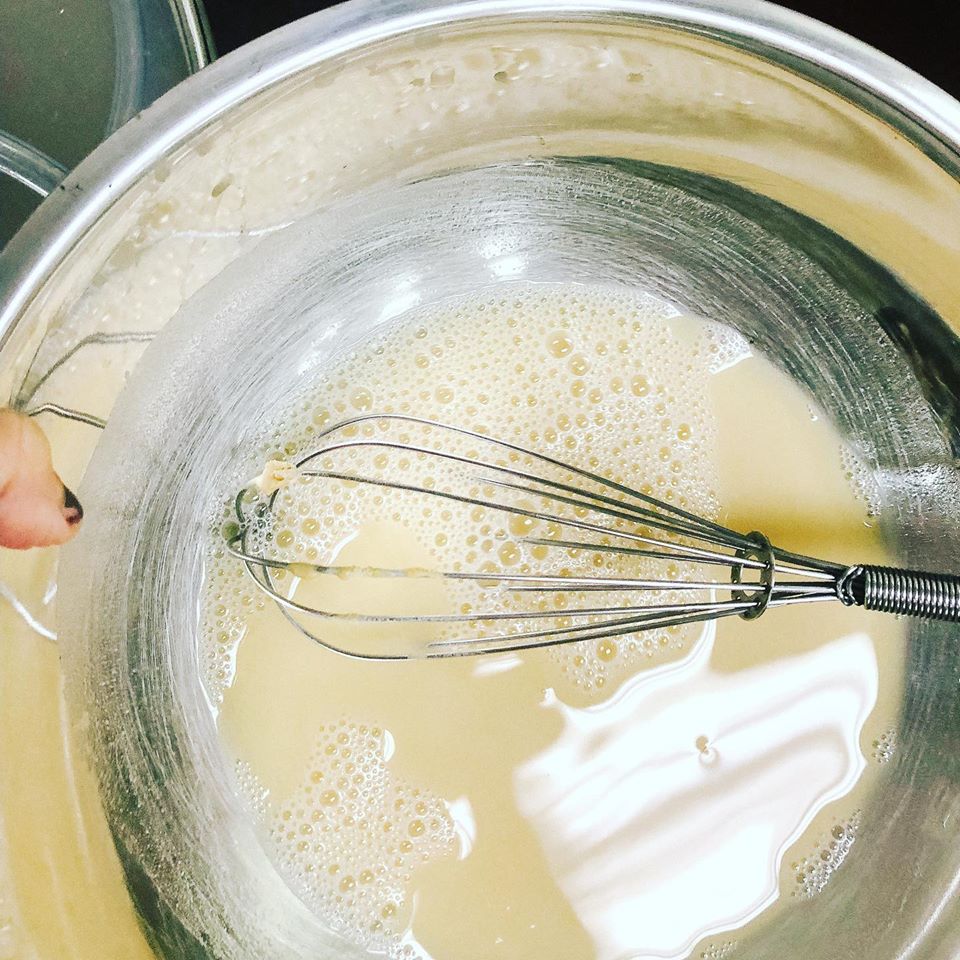
Yeast nutrients and wine additives set your wine up for success. Your wine yeast needs to be treated well. When you add yeast nutrients during your primary fermentation it optimizes the yeast and produces a successful fermentation with balanced flavors and aromas. These nutrients are made up of vitamins and minerals that are present in wine grapes. You can also utilize nutrients when making your malolactic bacteria addition, and other nutrients that help with color preservation, mouthfeel, and tannin structure.
Speak to your Musto Wine Grape representative to discuss which natural nutrients will provide the best results for your wine.
Sales@juicegrape.com or 877-812-1137
Milk Loaf Recipe Using 71B Yeast
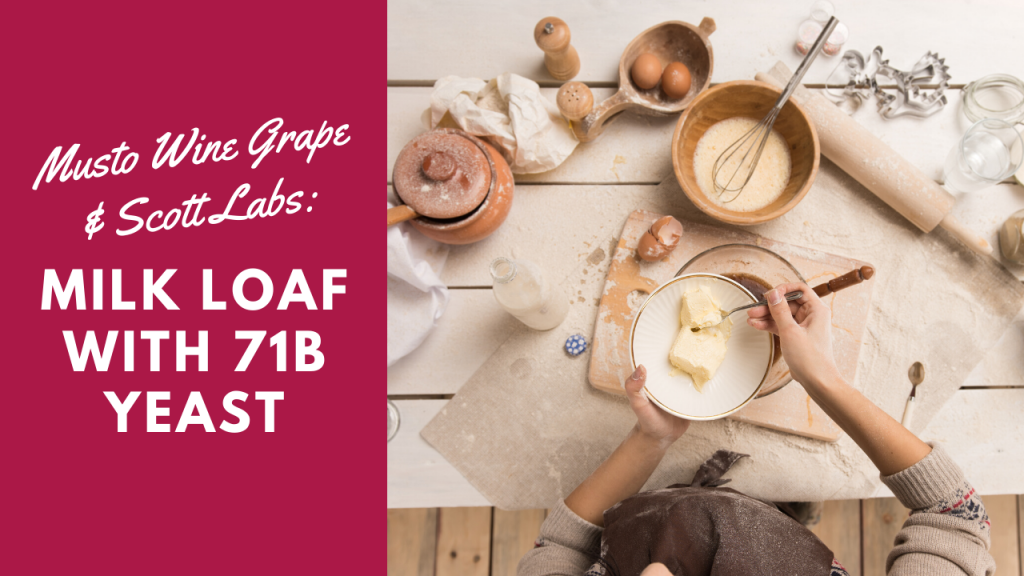
Have you run out of ideas for what to keep yourself busy with during quarantine? We’ve decided to experiment and the results were delicious. Using 71B yeast and Scott Lab’s recipe for milk loaf, we put our baking skills to the test and had a whole bunch of fun doing it!
Prep time runs just about two and a half hours, and bake time is about 25 minutes so this will surely keep you busy!
Here’s what you’ll need (for a yield of 2 loaves. If you’d like more increase ingredients as needed):
- 4 cups of bread flour
- 2 teaspoons of salt
- 1 tablespoon of sugar
- 2 sachets (9 grams) of Lalvin 71B Yeast (Don’t have this on hand? No worries! We have it in stock. Give us a call/visit and we’ll get you what you need!)
- 2 tablespoons of butter
- 1 cup warm whole milk
- 1 cup tap water
Here’s what you’ve got to do:
- Mix all dry ingredients together in a bowl. Then, add butter, milk and water. Mix everything together with a spatula.
- Once the wet ingredients have been absorbed, remove dough from bowl and transfer to a counter or workspace.
- Extensively knead the dough by stretching and folding it repeatedly. Once the dough is smooth and slightly shiny, divide it into two pieces. Cover each with plastic and let rise for 40 minutes.
- Flatten each piece of dough and roll into the shape of a football. Let the dough rise again for another 40 minutes.
- Place the dough into a bread pan (about 6”-7” long, 3.5” deep) and cover with plastic and allow to rise for another 60 minutes.
- Bake in a pre-heated oven at 420 degrees F for approximately 25 minutes.
- Let cool and enjoy!
Show us your finished loaves on Instagram and Facebook by commenting or tagging us @mustowinegrapeco and using the hashtag #mustocrushcrew
How to Stay Busy in Your Home Winery
Winemaker and Bootcamp Professor Frank Renaldi talks about how to keep busy winemaking in the winter months and when you’re social distancing. For more information on making wine email cmusto@juicegrape.com.
Winemaking Spotlight: Chilean Carmenere
It’s been a rough week to say the least…. So I opened one of the special bottles I brought back from my trip to Chile to help me relax. Which of course got me thinking about the wine I want to make this year. After drinking the Envero Gran Reserva Carmenere I think I have found my blend – 90% Carmenere and 10% Cabernet.
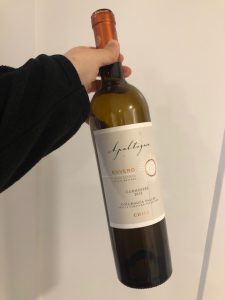
Wine Tasting Notes:
“Red-violet in color, brilliant and vivid, our Apaltagua Gran Reserva Envero shows ripe blackberries, tobacco, and spices. It possesses a remarkable combination of ripe fruit notes and oak mixed with vanilla. Its flavor is juicy, full, and concentrated, highlighting the softness in the mouth and the raspberry and plum tannins with a touch of tobacco. It has a long and lingering finish.”
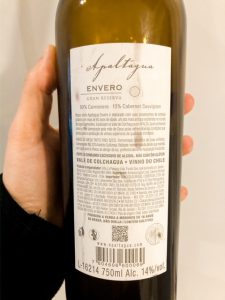
After enjoying this wine with my husband, he is totally on board with making it this spring season. So we discussed different ways to make Carmenere – things to consider, things to watch out for, and how to create the wine vibe we want. Below are some notes from our discussion on how we are going to attempt to re-create this bottle, as well as some information about where our Carmenere grapes come from.
FYI I have an alert on from Wine.com for when this wine becomes available to purchase in the US. If anyone is interested email me (cmusto@juicegrape.com) and I will share when I get the alert that it’s back in stock.
Winemaking Ideas:
Yeast: CSM
Why did we decide on CSM? This yeast was derived from Bordeaux and helps create intense aromatic profiles of berries, spice, and licorice. It also helps counteract and reduce vegetal aromas and flavors. CSM aids in adding complexity to the palate and pairs well with malolactic fermentation.
Malo: VP41
We have decided to use VP41 as our malolactic bacteria because it is known for steady fermentations and helps with wine structure. We will most likely co-inoculate in order to ensure that our malo completes sooner than later.
For more information about Timing your Malolactic Fermentation click here.
TA and pH levels in Chilean Carmenere
Personally adjusting TA and pH always makes me a little nervous. Who else is with me? Acidity can be a tough stylistic balance between sweetness and astringency. It is also essential in preserving and keeping your wine safe and age worthy. You want your must to be around 6-8 grams per liter for red wines. The pH is next in the balancing act which should be around 3.3 – 3.6 in red wines. Keep in mind if you have to do adjustments, like add acid, your pH will decrease. You want to make sure your pH is in the above range. It is more important for your pH to be within the right range than your TA. This is because your pH is critical to a good fermentation and avoiding bacteria and spoilage during aging. Below are a few articles you can check out to read up on pH and TA if you need a refresher. Also, we sell the best home winemaking book in my opinion called “Techniques in Home Winemaking” by Daniel Pambiachi. If you don’t already have it I would suggest ordering it. For more information on pH and TA I’ve referenced some articles below.
The Carmenere came in at a TA of .64 g/l and a pH of 3.84. So we adjusted the TA to 0.8 g/l and the pH to 3.56. This way our pH was in a stable range. Since we made adjustments last year, we are expecting to do a few adjustments to the must up front this season.
Watch Fermentation Temperatures
Our CSM yeast has great temperature range of 57F to 90F. Since we don’t have the best temperature control, I like the flexibility it offers. However, we will need to keep track of our temperatures every day and try to make sure that the must never goes over 85F because we do not want to burn off any positive aromas.
No Cold Soak
We aren’t going to do a cold soak because we don’t want to extract any extra pyrazines in the wine. Pyrazines are an organic compound in wine grapes that gives off flavors and aromas similar to green peppers.
Brix Levels in Previous Carmenere
The Brix levels are very important when working with wine grapes. You want to make sure that your yeast can handle the amount of sugar in the grapes. The Carmenere grapes from Chile are picked off of 18 year old vines. So there is always a range of Brix levels, and the age of these vines help create a lot of complexity and intensity in the wines. Old vines are my favorite! The CSM yeast can take up to 14% ABV so we are usually in the right range with how the grapes have arrived in the past; which is a maximum of 25 degrees Brix. In 2019 our Brix were 25.5.
Blend Decision
90% of Carmenere and 10% of Cabernet or make it 100% Carmenere. I’m not gonna lie, I’m not sure why this blend works so well but it does and I’m looking forward to duplicating it. However, there is a lot to consider here. We don’t have an aging vessel for 10% Cabernet, so we won’t be able to do a separate fermentation. We will have to do a field blend of all the grapes at once. If our cellar was bigger and we had more storage options, I would ferment the Carmenere and Cabernet separately, age them separately, and then blend before bottling.
Possibly do a little French oak
The winemaker who made this Carmenere aged it in 60% American and French oak barrels and 40% in stainless steel tanks. Considering we don’t have a large set up and multiple storage vessels we’ve decided to use French oak chips. This is because we enjoy the notes that French oak gives to the wine – vanilla, cedar, butter, cream soda, toasted bread, graham cracker, and marshmallow. Also, the wine we enjoyed had very silky tannins; usually attributed to French oak additions. Silky tannins are also attributed to micro-oxidation from aging in a barrel. If that doesn’t work we might utilize some Noblesse to help soften the tannins in the future.
Racking and Filtering Thoughts
We talked about racking the wine 3-4 times and to splash rack when we do for at least the first 2 rackings, if we are getting a rotten egg smell. We will most likely use a course filter 4 months after malo has completed and a medium (polish) filter week before bottling. Many people are nervous about filtering red wines, thinking it will strip wine of color. Don’t be concerned, it only takes out sediment and it really cleans up the wine.
Cellar bottles for 6 months
This is what the winemaker did with his wines, so we are going to try to do this with ours. Although the wine geek in me wants to drink it right away and maybe drink one bottle a month for “research purposes” (of course) to see the change and differences time in the bottle makes. But we will cross that bridge when we get to it. As for the types of bottles we will most likely use the CWA-018. I like the antique green color and the height gives more of a reserve style feel to the wine in my opinion. Also, we will use colmated corks as we will want to try to do some aging trials.
Viticulture Information:
Chile’s wine growing success is due to the cooling influences they receive from the Pacific Ocean, the Andes Mountains, and the warm and plentiful sunshine. Their warm Mediterranean climate allows for grapes to fully ripen and avoid fungal diseases. There is a current called the Humboldt Current that flows up from Antarctica, along the Chilean coast, and the cool air is pushed inland by the wind patterns. This cooling effect helps cool off the grapes during those sunny days. Colchagua and Curico Valley both benefit from this ocean influence; which allows these regions to produce grapes from fertile soil for wines that are gaining premium reputations.
Arrival Estimates:
The Chilean grapes and juices should start arriving in late April, early May. Once the grapes are harvested we will have more details.
Grapes Available from Chile:
Cabernet Sauvignon, Cabernet Franc, Carmenere, Malbec, Merlot, Petite Verdot, Pinot Noir, Syrah, Chardonnay, Pinot Grigio, Sauvignon Blanc, and Viognier.
Juice Available from Chile:
Cabernet Sauvignon, Cabernet Franc, Carmenere, Malbec, Merlot, Petite Verdot, Pinot Noir, Syrah, Chardonnay, Pinot Grigio, Sauvignon Blanc, Viognier, and Muscat.
For more information on how to make Chilean Carmenere check out my 2019 vintage recipe here. For more information on how to order your grapes and juices please email cmusto@juicegrape.com or call 877-812-1137.
I hope you and your family are safe and healthy during these challenging times!
Sincerely,
Christina Musto






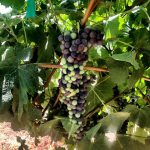
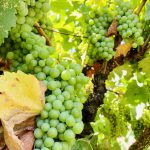
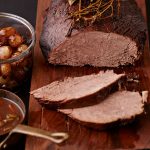
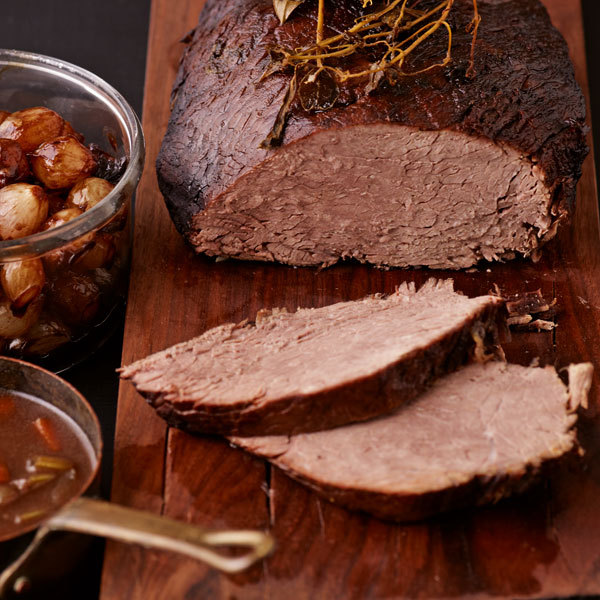
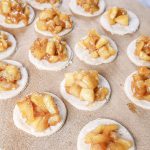


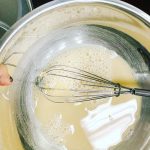
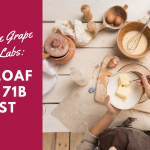

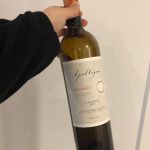
Recent Comments